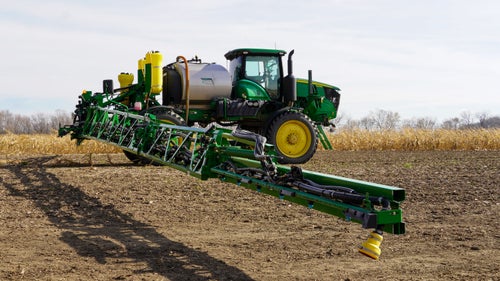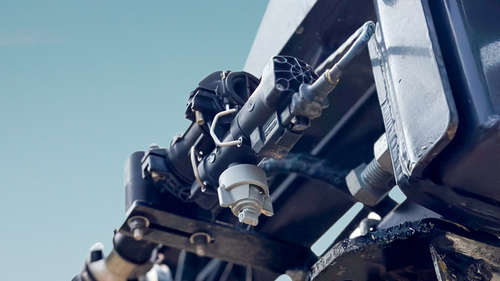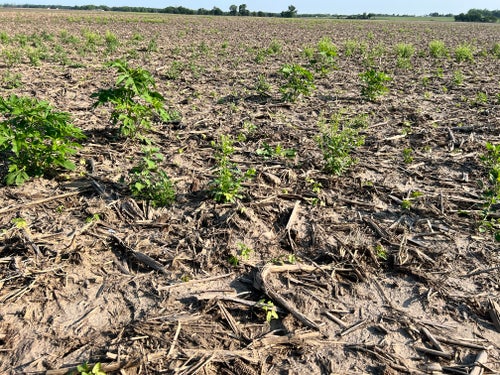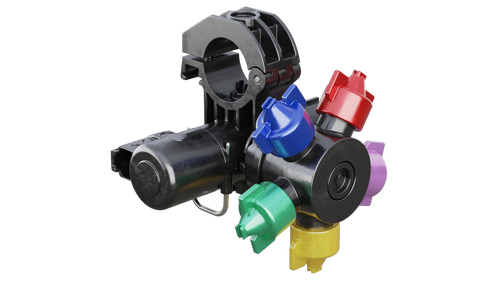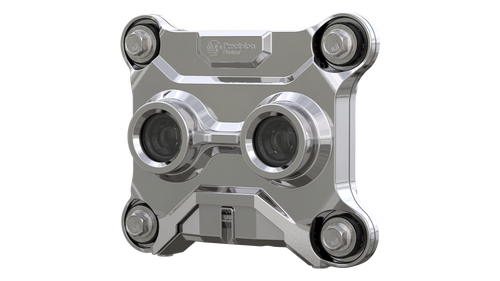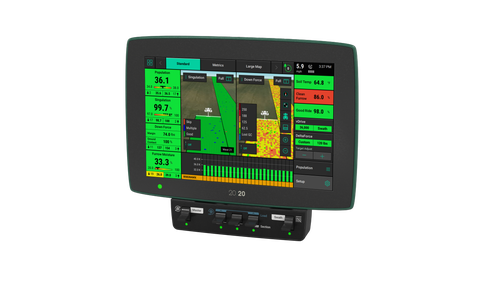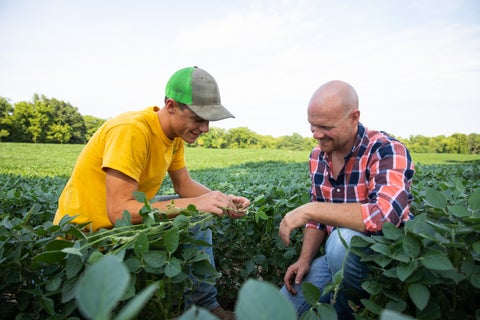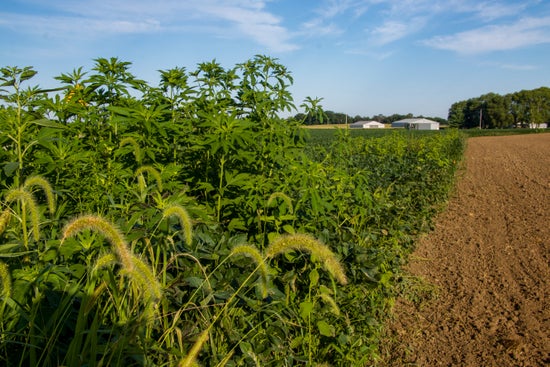
When taking the sprayer to the field, you ultimately have one goal in mind: a weed-free field. However, sometimes things don’t always go as planned and you may notice some weeds escape, which can be frustrating for many reasons.
- You don’t like looking at it.
- You don’t like your neighbors looking at it.
- You don’t like the future problems that this year's weed escape can cause.
How big of an issue is an escape of just a couple of weeds, after all?
Weed Escape in Action
Let’s look at one of the most prolific weeds in the United States to truly understand the impact of weed escape — Waterhemp.
A single Waterhemp plant produces between 28,000-160,000 viable seeds.* For the sake of averages, we’ll say the Waterhemp plants that escaped your weed control program this year produced 100,000 viable seeds each. Unlike other weed types, Waterhemp is a bit unique in the fact that only female plants have seeds. So, we'll cut that number in half and now you’re left with 50,000 viable seeds produced by each Waterhemp plant.
Although female Waterhemp plants produce large quantities of seeds, the average germination is only 25% and the annual mortality rate is quite high at 40%.* With statistics like that, the result of a few Waterhemp escaping here and there can’t be that bad, right?
The Game Begins
Let’s say this year you had an escape of one Waterhemp for every 50’x50’ (2,500 sq ft) section, totaling 17 Waterhemp per acre. If you multiply that by 50,000 to represent the average viable seeds each Waterhemp will produce, you’re left with 850,000 seeds. That’s 850,000 seeds per acre that now exist in your soil seed bank just from the escape of a couple Waterhemp here and there.
But, there’s hope, because as mentioned earlier, only 25% of those seeds will germinate next year and you have 99.98% weed control (1 in 5,000 survive) so your chemical program should save the day. Even if a couple happen to escape, with Waterhemp having a 40% mortality rate, surely the results can’t be too detrimental?
Results in Year Two
With 25% of the 850,000 seeds per acre present in your soil seed bank germinating, the result is 212,000 weeds per acre. Thanks to your 99.98% weed control program, only one in 5,000 survives. Of the 212,000 weeds, you’ll have an average of 42 Waterhemp per acre in year two.
Unfortunately, those 42 Waterhemp will average the same 50,000 viable seeds per plant giving you 2.1 million seeds per acre. Plus, there’s still seed in the soil seed bank from last year.
If you subtract the 40% mortality rate and 25% germination rate from the 850,000 seeds you started with, that leaves 300,000 seeds per acre from year one on top of what you’re now dealing with in year two. That’s a total of 2.4 million seeds per acre.
Ramp up Control in Year Three
It was evident in year two that 99.98% weed control was simply not enough. To tackle this Waterhemp issue, you decide in year three to step it up to 99.99% weed control (1 in 10,000 survive). Compared to last year, you’re now controlling twice as many weeds for every one you miss in the field.
With a 25% germination rate, those 2.4 million seeds per acre will result in 600,000 weeds. After implementing 99.99% weed control, only one in every 10,000 will survive, leaving you with 60 Waterhemp per acre. Even with better weed control that’s a 50% increase in Waterhemp compared to last year. Clearly the soil seed bank is a real threat to effective weed control.
If you multiply those 60 Waterhemp by the 50,000 viable seeds each will average, that’s 3 million seeds per acre. Years one and two left 840,000 seeds per acre behind after backing out mortality and germination. The result in year three is 3.84 million seeds per acre even with 99.99% weed control.
End the Game in Year Four
After the results of three years, you decide it’s time to end this statistical nightmare.
In year four, you ramp up your chemical control program and drive towards 100% weed management. Using the same 25% germination rate, those 3.84 million seeds from the previous year will result in 960,000 weeds per acre. With 100% weed control, zero Waterhemp survive. Game over…or so you thought.
You may have won the battle, but unfortunately, you have not won the war.
Even with 100% weed control in year four, you still have an active soil seed bank. Years one through three totaled 3.84 million seeds per acre and even after backing out the 40% mortality rate and 25% germination rate, you’re still left with 1.3 million seeds per acre.
You spent the extra money and went the extra mile in year four to achieve 100% weed control, but it still wasn’t enough.
What Can We Learn From this?
- 99.99% weed control is simply not good enough.
- The easiest and cheapest weed control is now.
- Weed control is a multi-year war.
It is evident the sprayer pass is one of the most important agronomic passes on the farm when it comes to protecting the health of your crop. If you make a mistake with the planter, it’ll cost you that year, but you can learn from your mistakes and recover those costs in the following years.
However, if you make a mistake with the sprayer, the impacts of the mistake will be felt for years to come. With 100% weed control from the start, you won’t have to deal with the consequences year after year like the Waterhemp example above.
Getting Ready for This Season
To eliminate the risk of weed escape, your sprayer needs to do two things exceptionally well: control the desired rate of application and apply the correct coverage of each product.
As the sprayer operator, one component you can optimize that directly impacts both rate and coverage is the sprayer nozzles. With hundreds of different nozzle options available on the market, it can be challenging to determine which one is right for you. Ahead of this season, review the labels of the chemicals within your weed control program as each label will indicate the recommended droplet size and spray quality for that product, ultimately helping you decide the right nozzle for your application.
Unfortunately, even with the right nozzles selected, you may not get the desired results because of the effects sprayer speed has on nozzle PSI. When you slow down for a washout in the field, your decreased speed will result in a decrease in pressure which causes an increase in droplet size. This can impact the overall coverage you’re seeing across the field and potentially lead to the escape of weeds.
Another issue you may face with a traditional rate control sprayer is the lack of turn compensation. As the sprayer goes around a curve, the inner portion of the boom travels slower than the outer portion of the boom. This results in inconsistent coverage as the inner nozzles are covering less surface area and ultimately applying more product per area than desired. Whereas the outer nozzles are covering more surface area, resulting in less product per area and insufficient coverage.
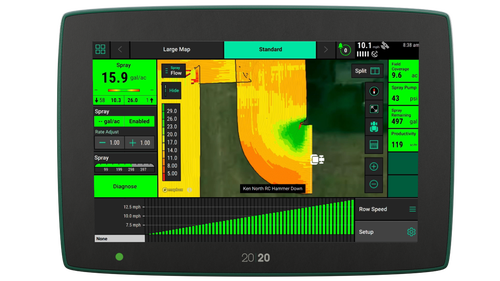
This 20|20 map shows the inconsistent application rate from the outer boom to inner boom when following a curve. The intended rate was 15 gal/A, but while turning the inner boom jumped to 30 gal/A and the outer boom dropped to 7 gal/A.
Not only does the lack of turn compensation lead to wasted chemicals and potential yield loss, but it can also open the door for weed escapes in the areas with insufficient coverage.
Upgrade Without Switching Sprayers
SymphonyNozzle, a pulse with modulation system (PWM), allows for independent control of rate and pressure. This provides you with precise control across a wider operating range and allows for consistent coverage even with a change in speed. By upgrading to SymphonyNozzle, you can gain nozzle by nozzle swath control allowing for turn compensation and variable rate application.
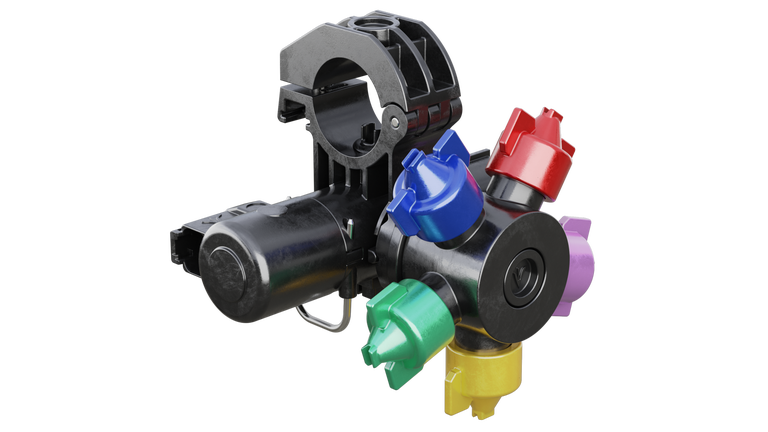
With SymphonyNozzle, you can optimize your sprayer to reach its peak performance. Consistently hitting the rate and pressure metrics needed for adequate coverage is critical in ensuring the 100% weed control you’re after and eliminating the risk of weed escape in your fields.
*References:
“Waterhemp - Weed of the Year.” NDSU Weed Science, www.ag.ndsu.edu/weeds/weed-of-the-year-files/waterhemp.
Loux, Mark. “Palmer Amaranth and Waterhemp Management: It’s All about the Seed.” Ohioline, Ohio State University Extension, 20 June 2019, ohioline.osu.edu/factsheet/anr-76.
Mohler, Charles L., et al. Manage Weeds on Your Farm: A Guide to Ecological Strategies. Sustainable Agriculture Research and Education Sustainable Agriculture Research and Education (SARE), 2021.
Seipel, Tim, and Lovreet Shergill. “Waterhemp (Amaranthus Tuberculatus): Biology, Identification, and Management.” MSU Extension, June 2022, apps.msuextension.org/montguide/guide.html?sku=MT202211AG.
